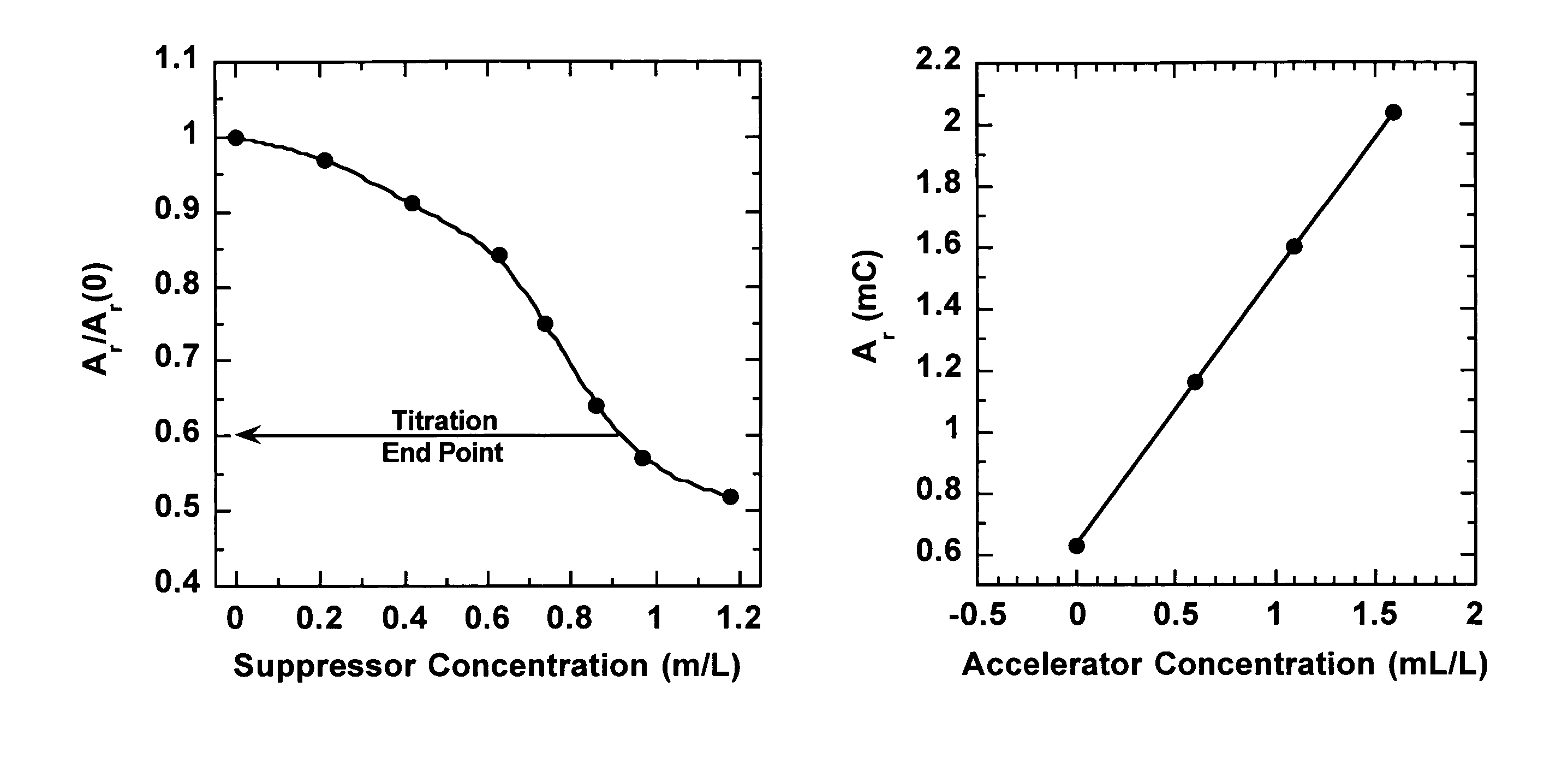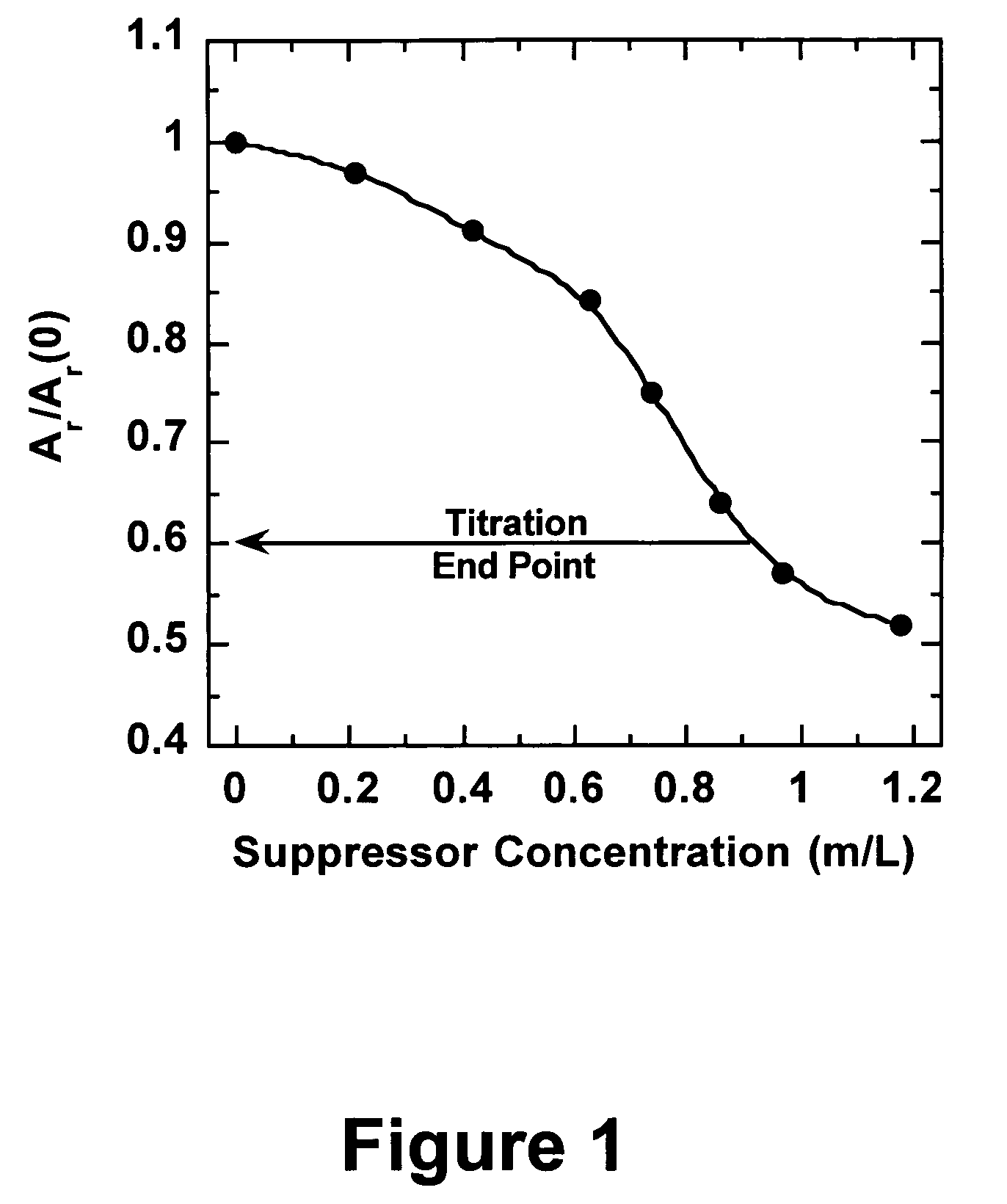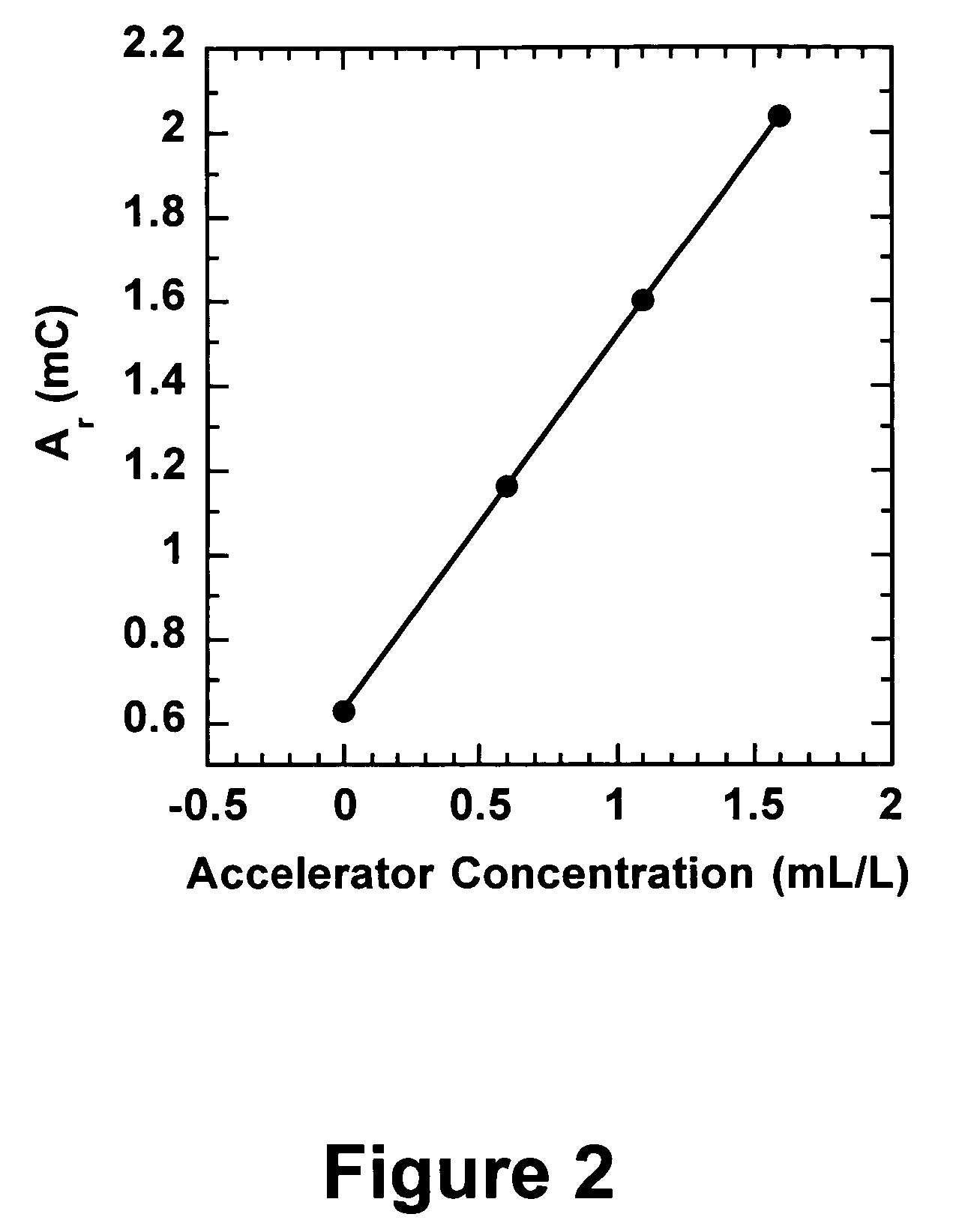Efficient analysis of organic additives in an acid copper plating bath
a technology of organic additives and plating baths, applied in the direction of liquid/fluent solid measurements, instruments, electrochemical variables of materials, etc., can solve the problems of consuming large amounts of time and expensive chemicals, accelerating species that is consumed with low efficiency, and limited depletion
- Summary
- Abstract
- Description
- Claims
- Application Information
AI Technical Summary
Benefits of technology
Problems solved by technology
Method used
Image
Examples
Embodiment Construction
[0020]Technical terms used in this document are generally known to those skilled in the art. The term “electrode potential”, or simply “potential”, refers to the voltage occurring across a single electrode-electrolyte interface. In practice, the electrode potential often includes an appreciable resistive voltage drop in the electrolyte, which typically remains constant and does not affect voltammetric analysis results.
[0021]As used in this document, the terms “electroplating”, “plating” and “electrodeposition” refer to metal electrodeposition and are equivalent. A “plating bath” contains organic additives whose concentrations are controlled within ranges, whereas the corresponding “supporting electrolyte” typically has substantially the same inorganic composition as the plating bath but no organic additives. In some cases, a supporting electrolyte may contain one or more organic additives at predetermined concentrations, or have an inorganic composition that differs from that of the...
PUM
| Property | Measurement | Unit |
|---|---|---|
| feature size | aaaaa | aaaaa |
| diameter | aaaaa | aaaaa |
| diameter | aaaaa | aaaaa |
Abstract
Description
Claims
Application Information
 Login to View More
Login to View More - R&D
- Intellectual Property
- Life Sciences
- Materials
- Tech Scout
- Unparalleled Data Quality
- Higher Quality Content
- 60% Fewer Hallucinations
Browse by: Latest US Patents, China's latest patents, Technical Efficacy Thesaurus, Application Domain, Technology Topic, Popular Technical Reports.
© 2025 PatSnap. All rights reserved.Legal|Privacy policy|Modern Slavery Act Transparency Statement|Sitemap|About US| Contact US: help@patsnap.com



